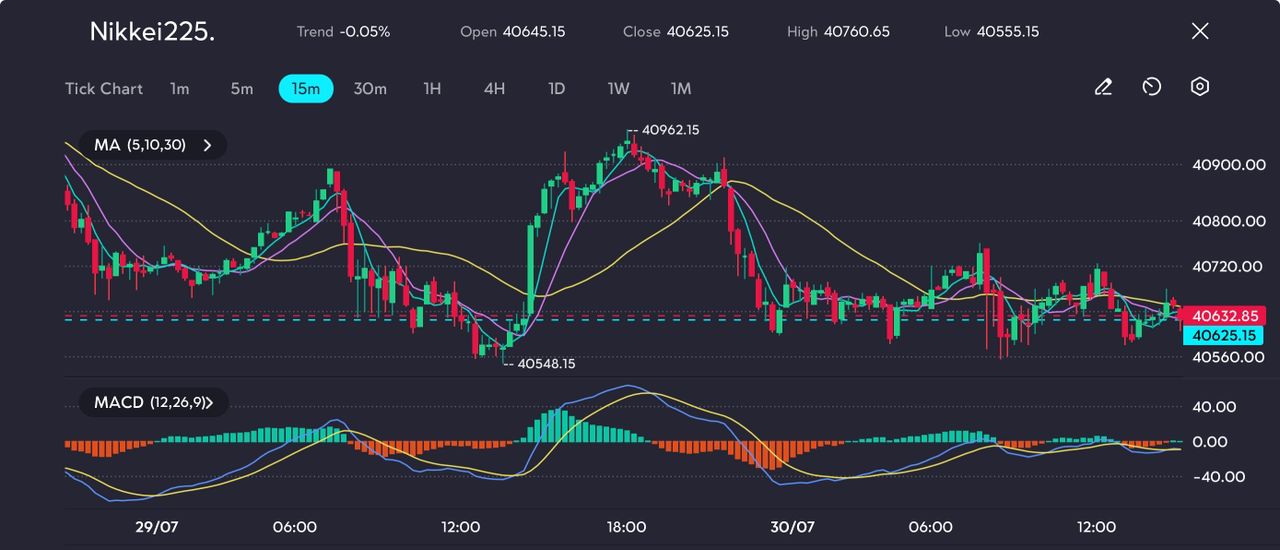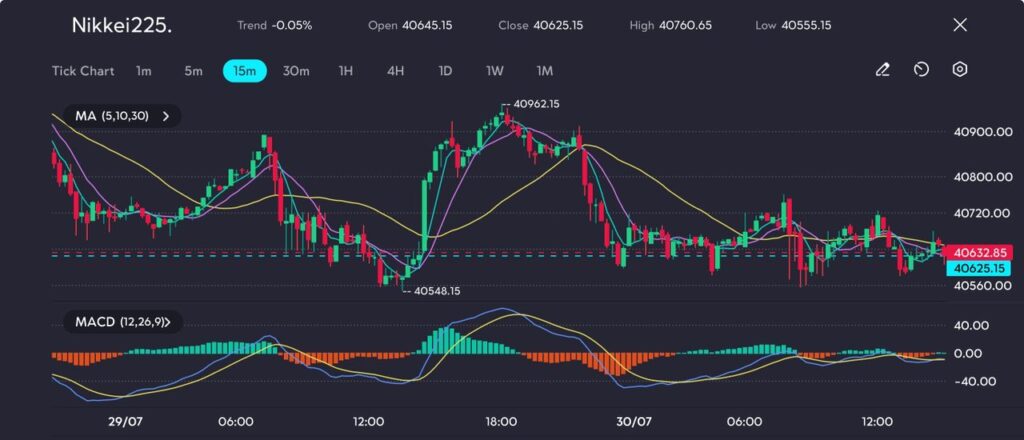The French finance minister thinks the trade agreement with the US is the best solution.
Nikkei Ends Steady As Markets Await BOJ Verdict

Japanese stocks closed on a mixed note on Wednesday, as investors took a cautious stance ahead of the Bank of Japan’s (BOJ) upcoming policy announcement. The Nikkei 225 edged marginally lower, slipping 0.05% to finish at 40,625.15. Meanwhile, the broader Topix Index climbed 0.4% to 2,920, buoyed by strength in the banking and energy sectors.
Investor hesitation was largely driven by uncertainty surrounding Thursday’s BOJ decision. While markets broadly anticipate no change to interest rates, attention has turned to potential upward revisions in the central bank’s inflation projections.
Persistent price increases in sectors such as food and services may bring the BOJ closer to tightening its policy later in the year. However, officials remain wary of potential risks tied to global trade tensions.
Adding to the cautious mood, US Commerce Secretary Howard Lutnick reaffirmed that the 1 August tariff deadline for countries lacking trade agreements is still set in stone.
Although an extension of the trade ceasefire between the U.S. and China seems probable, no formal deal has been struck. Japan, as a key global exporter, remains vulnerable to disruptions in international manufacturing supply chains.
Technical Analysis
The Nikkei 225 traded sideways after a sharp intraday spike toward 40,962.15 was swiftly retraced. Price action now hovers around the 5-, 10-, and 30-period moving averages, all of which have begun to flatten. This typically signals market indecision or the start of a consolidation phase.
The MACD histogram has remained subdued, alternating weakly between green and red bars, and the signal line has stayed close to the zero axis without a clear trend bias.

With Japan’s earnings season still in motion and the Bank of Japan maintaining its ultra-loose stance as expected, equity traders appear hesitant to commit to a direction.
The lack of a strong catalyst may keep the index pinned within the 40,550 to 40,950 band for now. A confirmed break above 41,000 could open the door for renewed bullish momentum, but a dip below 40,540 might shift sentiment to the downside.
Watchful But Guarded Outlook
Should the BOJ adopt a more hawkish tone or sharply upgrade its inflation outlook, Japanese equities could come under pressure, especially if the yen strengthens in response.
From a technical perspective, a move below the 40,560 support zone may open the door to a slide towards 40,400. On the other hand, sustained gains above 40,800 would likely require more robust support from broader macroeconomic developments.
Create your live VT Markets account and start trading now.




